How To Integrate AI and ML With .NET Applications
Artificial Intelligence (AI) and Machine Learning (ML) are playing a bigger and bigger role in today’s digital world’s activities. By integrating AI and ML with .NET applications and other corporate apps and solutions, every organization seeks to strengthen its IT ecosystem. Learn why you should incorporate AI and ML into .NET apps, how to accomplish it, and examples of .NET applications that employ AI and ML in this blog post.
Introduction
.NET apps have been used by businesses for more than 20 years. They provide unmatched performance, scalability, and security. Organizations all around the world rely on .NET apps to automate repetitive tasks, optimize time-consuming procedures, and boost employee productivity; now they want more. Organizations today aim to boost productivity by combining .NET programs with AI and ML.
The versatility of .NET allows for the integration of internal IT infrastructure with third-party programs, platforms, and data sources. It enables them to use data effectively and maximize the value of information and data that have been gathered. Additionally, it provides a broad range of tools and resources that are essential for creating, maintaining, and protecting dependable business applications. For companies looking to invest in a successful IT ecosystem,.NET is a pricey possession.
Reasons to Implement AI and ML in .NET applications
Business capabilities, performance, and productivity must be used to analyze AI and ML. Businesses may customize experiences, automate and optimize workflows, and get new insights into their data by integrating AI and ML with .NET apps. All of these things can help businesses become more productive and efficient.
Here are several justifications for why .NET apps need to use AI and ML:
Process Automation
You have the chance to easily automate digital and physical operations that are frequently repetitive, error-prone, and time-consuming by integrating AI and ML in .NET programs. It enables your staff to concentrate on other important duties and boost output.
For instance, moving client data from various platforms to a single server.
Predictive Analytics
.NET apps may find subtle patterns in a lot of data and decipher its meaning using AI algorithms and ML models. Businesses can forecast the likely course of action a client or user will take by integrating AI and ML with .NET apps. Companies can use predictive insights to make well-informed decisions and prepare for impending favorable or bad events.
For instance, determining if a buyer will purchase a specific product or not.
Personalization
.NET apps are capable of identifying subtle patterns in a vast volume of data and deciphering their significance using AI algorithms and ML models. Businesses can forecast what a user or client will likely do by integrating AI and ML with .NET apps. Companies may make educated decisions and prepare for impending good or bad events thanks to predictive insights.
Predicting if a buyer will purchase a specific product, for instance.
Advanced Analytics
With the help of .NET applications, AI and ML can handle massive volumes of complicated data sets in real-time to produce accurate results. Advanced analytics provide specific insights and recommendations that allow firms to make data-driven decisions.
For instance, sophisticated analytics is used to analyze customer feedback and acquire insights into their satisfaction, preferences, and opinions. Sentiment analysis is one-way.
How to Integrate AI and ML into .NET Apps?
Applications built with .NET can process massive volumes of complicated data sets in real-time to produce accurate results. By providing specific insights and recommendations, advanced analytics help firms make data-driven decisions.
Sentiment analysis, for instance, is one-way, and advanced analytics are used to analyze client feedback and discover their satisfaction, preferences, and opinions.
AI and ML Libraries and Frameworks Compatible with .NET
There are a number of AI and ML libraries and frameworks that are compatible with .NET, but the one to choose will completely depend on the needs of your project, such as the ML model you plan to build or the AI feature you want to implement in the .NET application.
The following are some of the top AI and ML libraries and frameworks you can utilize to incorporate AI into .NET applications:
TensorFlow
It is a dynamic and well-liked ML framework that Google introduced for creating ML models. TensorFlow.NET or TF.NET standard binding capability allows ML to be included into .NET applications. The complete TensorFlow API can now be implemented in C#, making it simpler to create, deploy, and train machine learning models within the .NET framework. Recently, a high-level interface and an independent package, TensorFlow, were made available via TensorFlow.NET. Keras.
CNTK (Cognitive Toolkit)
Microsoft created the unified deep learning toolkit known as CNTK, or Cognitive Toolkit, to represent neural networks. Feed-Forward DNS, Convolutional Nets, and Recurrent Networks are just a few of the model types that .NET programmers may use and mix with ease. It may be used to add commercial-grade distributed deep learning to your .NET applications and is accessible under an open-source license.
Accord .NET
It is a C#-written .NET Machine Learning framework that provides numerous audio and picture processing tools. It is used by programmers to include AI, high-quality computer vision, computer audition, signal processing, and statistics into .NET applications. It recently combined with the AForge.NET project to provide a single API for building machine learning models.
PyTorch
A scalable and adaptable deep learning framework that is open-source, PyTorch is suitable for conducting research. For.NET developers wishing to use AI and ML in.NET applications, it delivers stability and assistance. It is a good option for creating fresh, genuinely dynamic ML algorithms because of the Python package it offers to combine high-level technologies like Tensor Computation and NumPy.
LightGBM
It is a component of Microsoft’s DMTK project, a highly effective gradient boosting (GBDT) system that is open-source. With the help of this state-of-the-art framework, you can integrate decision tree algorithms for classification, ranking, and many other ML model development and deployment into your.NET applications. To enable classification, regression, and basic deep-learning models, developers use LightGBM.
Dlib
Dlib is a contemporary C++ toolkit with open-source licensing that includes numerous ML algorithms and other tools required for creating complicated C++ software to handle a variety of business difficulties. In .NET applications offering different image processing and facial recognition methods, it is frequently used to incorporate Machine Learning and Computer Vision capabilities.
ONNX
The Open Neural Network Exchange (ONNX) is a cross-platform, open-source machine learning framework format that was created with the goal of representing important machine learning models. The ONNX framework has been used by developers to incorporate machine learning models into mobile.NET apps. With the aid of ML .NET, you can utilize it to create prediction models for C# .NET Core console applications.
ML .NET
One ML library that is frequently used to build unique ML models using C# and F# without having to leave the.NET ecosystem is ML.NET. You can easily design, train, and deploy high-level custom ML models by providing AutoML and productive tools. Additionally, you may incorporate more ML situations by using other ML frameworks as infer.NET, TensorFlow, and ONNX. You may integrate AI and ML capabilities like sentiment analysis, product recommendations, price predictions, customer segmentation, object detection, fraud detection, and related ML models using ML .NET.
Top Five Use Cases of AI and ML With .NET Applications
Regardless of how they are used, artificial intelligence and machine learning have a substantial impact on every industry and business. It may be included into .NET applications, websites, online shops, and enterprise programs.
According to a recent McKinsey survey, worldwide AI usage will be 2.5 times higher in 2022 than it was in 2017. Additionally, during the past five years, businesses have showed a huge interest in integrating various AI and ML capabilities into their operations. However, the most widely used .NET apps powered by AI and ML have remained largely stable.
Predictive Maintenance
Numerous industries are using .NET apps that successfully incorporate AI and ML for predictive maintenance. Data is gathered, the ML model evaluates the data, and it forecasts the failures of upcoming occurrences. It produces the knowledge needed to make a reactionary choice or to implement a procedure for fixing problems as they arise.
For instance, Amazon uses .NET programs to create and implement predictive analytics models for its e-commerce and retail web portals, such as amazon.com and Amazon Web Services.
Customer Service
In many ways ,.NET apps equipped with AI and ML capabilities improve the customer service experience. It aids in real-time conversation tracking with customers. In order to provide feedback and forecast future client needs,.NET programs analyze customer support agents against KPIs including language, psychographic profiles, and speech patterns.
Fraud Detection
Recent years have seen an increase in fraud instances, according to the banking, insurance, finance, and IT industries. Many businesses that regularly use.NET applications have increased their productivity and efficiency by utilising ML-powered fraud detection algorithms. Email phishing, identity theft, credit card theft, document forgery, fake applications, and other fraud types are all detected using these fraud detection approaches.
Image and Video Processing
Many firms have improved the functionality and capacity of.NET apps to process photos and videos by leveraging cutting-edge deep learning technologies and improving CNN models. For image improvement, restoration, segmentation, compression, image detection, manipulation, generation, and image-to-image translation, AI and ML are combined with .NET applications.
Natural Language Processing (NLP)
Applications built with.NET can comprehend spoken language and written text like people by integrating AI and ML. .NET applications analyze human language in the form of Text or Voice data by fusing computational linguistic rule-based modelling of human language with statistical, machine learning, and deep learning models.
Conclusion
The tools and technology used to construct apps are continually changing along with the world of software development. Integration of AI and ML with.NET applications is one of the newest trends in software development. Both people and corporations can gain greatly from it. By automating repetitive operations, streamlining workflows, and offering predictive insights, AI and ML can improve performance. By enhancing customer experiences and offering real-time data analysis, it can also increase efficiency. Finally, by reducing the need for manual data entry and freeing up resources to work on other projects, AI and ML can help to enhance productivity. In general, AI and ML can support the development of a .NET application that is more effective and productive and will promote corporate growth.



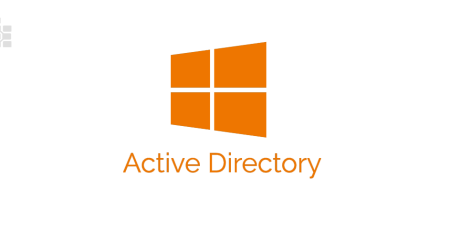
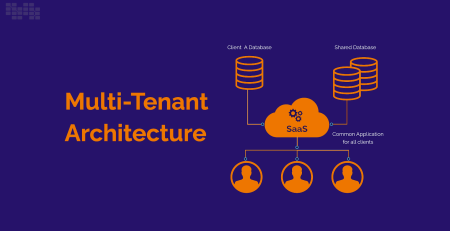
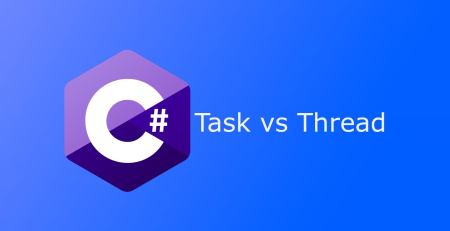
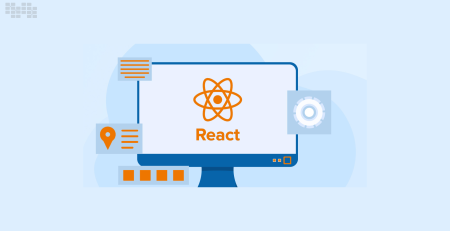



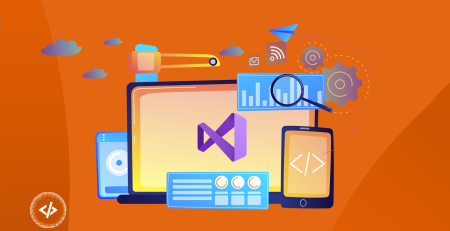


Leave a Reply